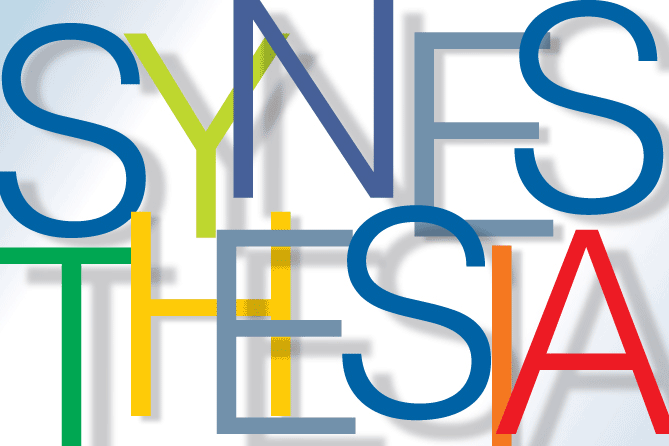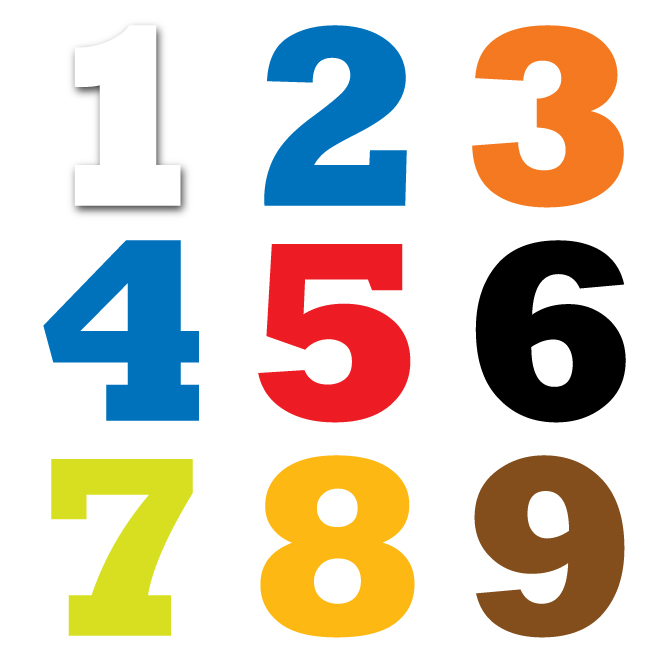I was listening to NPR a few Saturdays ago and heard a captivating story about ASMR, Autonomous Sensory Meridian Response, a condition where a person experiences heightened ecstatic sensations when listening to someone whispering, folding a napkin, or certain sounds created by repetitive motion, like tapping a pencil on a desk, or the clicking of knitting needles. As the writer described her life experiences and routines, I wondered to what extent unique physiology affects our career choices. I thought of my own, relatively recently discovered “syndrome” called synesthesia.
What is Synesthesia?
From the ancient Greek words for “together” (syn), and “sensation” (aisthēsis), synesthesia literally means joined perception. Wikipedia defines it as “a neurological phenomenon in which stimulation of one sensory or cognitive pathway leads to automatic, involuntary experiences in a second sensory or cognitive pathway.” People with synesthesia (synesthetes) have hard-wired associations between numbers and colors, shapes and flavors, letters and sounds, etc.
Last year, while watching the NOVA episode “How does the brain work” I was surprised and somewhat relieved to discover these mysterious landscapes and fusions in my mind had a name. And that lots of other creative people experience this in many similar and also quite different ways. I think it’s why I chose, or was drawn to (no pun intended), graphic design and photography. I have created 2- and 3-dimensional art since I was very young. Color associations with shapes and letters have always been there. I have at least two types of synesthesia, colors associated with letters and numbers, and spatial arrangements of numbers and the alphabet. For example, the numbers 1-9 have colors (this is called color-graphemic synesthesia):
I thought that the color associations with numbers may have been imprinted on my subconscious from alphabet blocks I played with as an infant. But that doesn’t explain the arrangement of numbers in 3-dimensional space (number form synesthesia) or why the numbers for dates, dollars and temperature have different arrangements in my brain:
As I prepared the first number map illustration above, I realized I have another number map for the dates specific to my life. The years I have been on the planet have a slightly different arrangement than the numbers and dates above—the dates follow the same pattern until around 1962 when I was born:
Do we choose our career or does it choose us?
I am sure this phenomenon led me to my career choice of graphic design. But although I did make a choice, I would describe becoming a designer as inevitable. Line, shape, color, form and communicating visually have always been deeply fascinating and something I could not avoid. Print Magazine’s article Seeing, hearing, and Smelling Color: Synesthesia 1 author Jude Stewart says “I’ve seen colors attached to my numbers and letters forever. The knowledge of what this feels like is innate; it challenges language to explain it.” and, after briefly exploring some scientific analyses, “So what’s the usefulness of synesthesia—is there evolutionarily any point?…synesthesia is famously, but not narrowly, helpful in boosting a brain’s creativity…” Her follow-up article Seeing, hearing, and Smelling Color: Synesthesia 2 explores this further, and posits that one of the benefits of grapheme synesthesia (letter and number) is excellent spelling and number-remembering. She ends with a question “…I imagine lots of designers and design-fans are synesthetes. How many of you are?” I have often wondered why, as a primarily “right-brained” person interested in design, music, and other non-verbal or non-analytical pursuits, how I could be so drawn to spelling and proofreading. This explains it. (I hope there are no typos in my post). And my variations of synesthesia explain my specific passion for graphic design, since this discipline deals with letterforms, colors, shapes, numbers, and communication.
Discussion about, and interest in, synesthesia among neuroscientists, psychologists, writers, artists, poets and musicians has increased significantly in the last decade. The science is fascinating, but more than that, it is compelling to find out how many people experience this and in such varied manifestations. As I researched this post, I discovered my synesthesia is present in many other areas: days of the week occupy a 3-dimensional space; drumming has both colors and textures I have not mapped yet; practicing kung fu brings up associations with colors and textures also, as yet, uncharted. I wonder what other areas and benefits are yet to be discovered.







